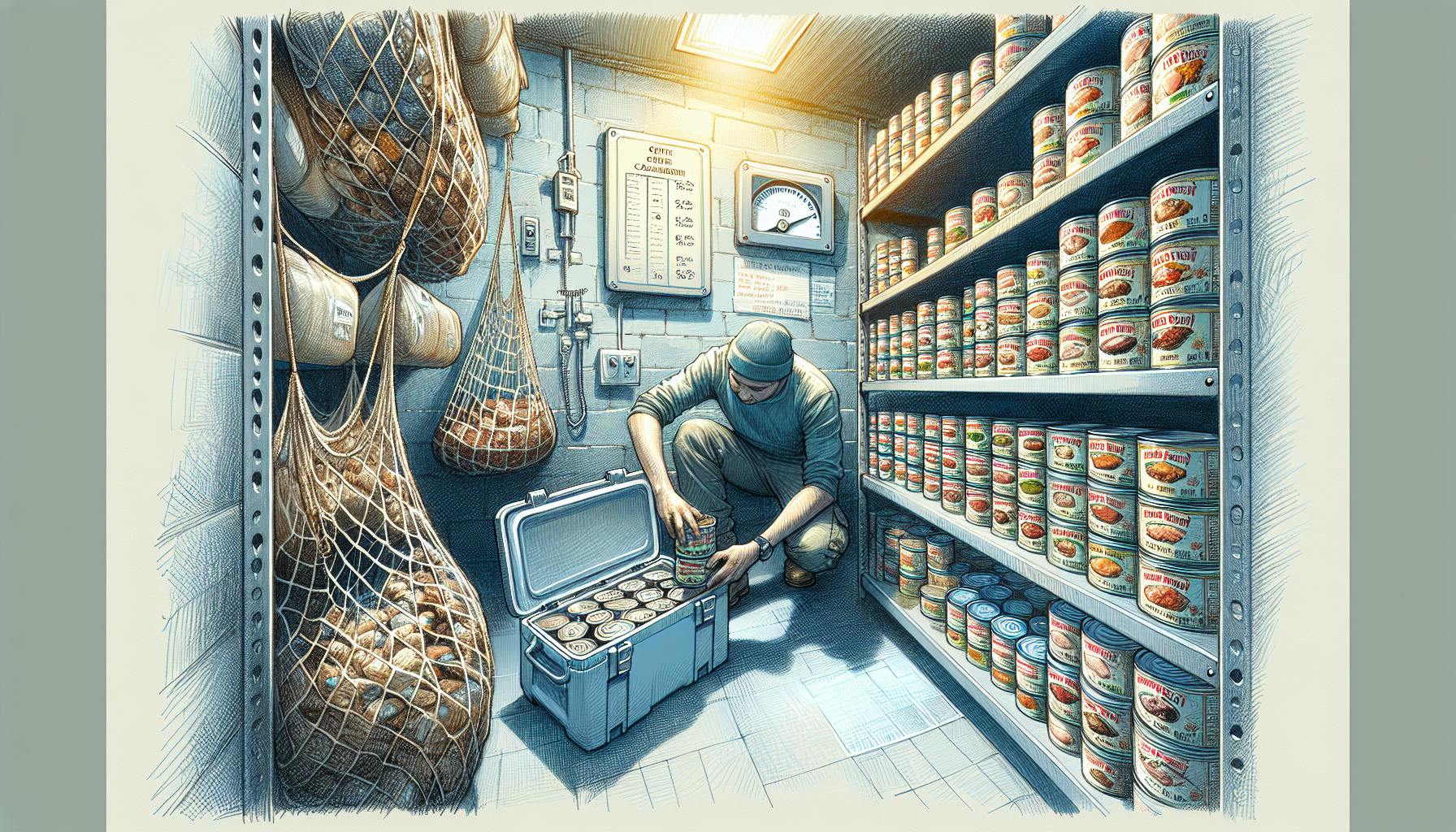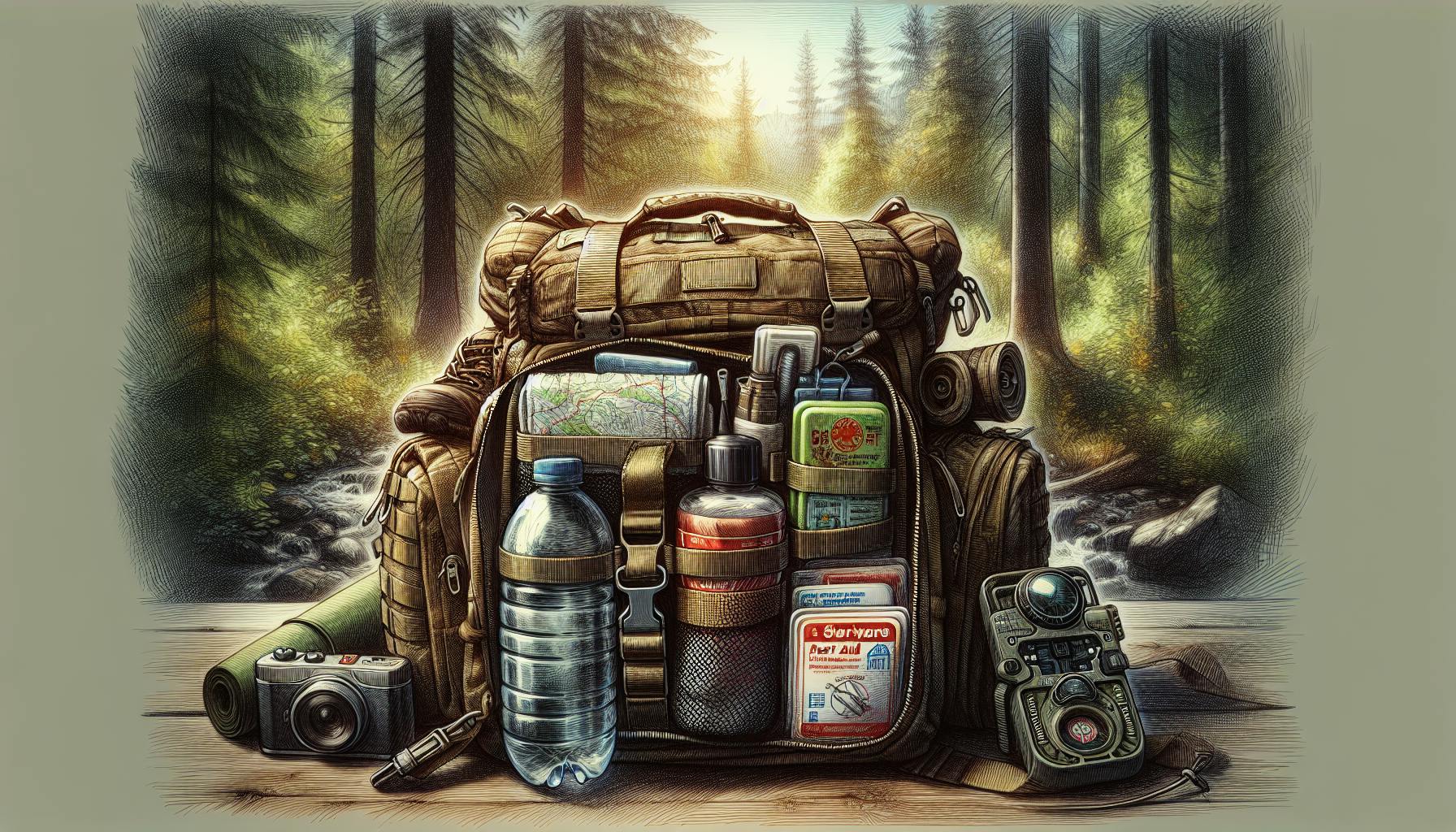When it comes to emergency preparedness, most preppers would agree that having a stockpile of nutritious, long-lasting freeze-dried foods is crucial.
By learning the proper methods for storing, rehydrating and preparing freeze-dried meals, you can enhance flavor, add variety, and make your prepper diet more enjoyable long-term.
In this comprehensive guide, you'll discover tips for rehydrating freeze-dried foods, boosting flavor with spices and toppings, creating one-pot meals, and more - transforming your stockpile into delicious, nourishing meals your family will look forward to eating.
Introduction to Freeze Dried Prepper Food
Freeze dried foods are lightweight, compact meals that are very popular among preppers and survivalists. The freeze drying process removes almost all moisture from foods, allowing them to be stored for years while retaining much of their original flavor and nutritional value. In this article, we'll cover the benefits of freeze dried foods for emergency preparedness kits, proper storage methods, how to rehydrate meals, and tips for improving their taste.
What is Freeze Dried Food
Freeze drying works by freezing foods and then reducing the surrounding pressure to allow the frozen water inside to sublimate directly from a solid to a gas. This removes up to 98% of the food's moisture content. The lack of water makes it impossible for spoilage reactions to occur. It also significantly reduces weight and volume. Freeze dried ingredients are very lightweight and take up little space compared to traditional canned goods.
Benefits for Preppers
There are several key advantages that make freeze dried foods useful for preppers:
-
Long shelf life - Properly packaged, freeze dried foods can last 25+ years in storage. This makes them ideal for emergency food reserves.
-
Lightweight - The low moisture content results in compact, lightweight meals for bug out bags and survival kits.
-
Nutritional value - Most vitamins and nutrients are retained despite the lack of water. Rehydrated meals provide energy and nutrition when needed most.
Article Overview
In the following sections, we'll cover proper storage conditions to maximize shelf life, rehydrating freeze dried meals, and tips to improve flavor from spices, oils, and more. Following the guidance in this article will help you reliably depend on your emergency freeze dried food supply when you need it the most.
Is freeze-dried food good for prepping?
Freeze-dried foods are an excellent option for emergency food storage and survival preparedness. When water is removed from fresh foods through freeze-drying, the resulting lightweight, compact foods have an extended shelf life of up to 25 years. Rehydrating freeze-dried foods with water allows them to return to near their original state.
Some key benefits of stockpiling freeze-dried foods include:
-
Long shelf life: Properly packaged and stored freeze-dried foods can last decades, making them perfect for emergency food reserves.
-
Lightweight: The removal of water makes these foods very lightweight and compact compared to traditional canned goods. Easy to transport and store.
-
Variety: Many common foods like meats, vegetables, fruits, and complete meals can be freeze-dried. Great for adding diversity to food storage.
-
Nutrient retention: Freeze-drying better preserves nutrients compared to other preservation methods like canning. Provides health benefits.
-
Taste: Most freeze-dried foods retain excellent flavor and texture qualities after rehydrating.
-
Customization: With a home freeze dryer, you can freeze dry fresh foods you grow/hunt and create customized meals.
Having a stockpile of nutritious, tasty freeze-dried foods that can last for decades makes them an exceptional addition to any prepper's emergency food supplies and bug out bags. Freeze-dried foods check all the boxes for an ideal survival food.
How many years does freeze-dried food last?
Freeze-dried food can last for many years, making it an excellent option for long-term food storage and emergency preparedness. When food is freeze-dried, 98-99% of the moisture is removed. This greatly extends the shelf life compared to other preservation methods.
Properly stored freeze-dried foods have a typical shelf life of 25-30 years. With appropriate storage conditions, some freeze-dried foods may last even longer - potentially up to 50 years. Key factors that affect shelf life include:
-
Storage container - Food should be kept in an airtight, food-grade plastic or glass container. This prevents moisture and oxygen from seeping in.
-
Storage temperature - Cool, dark, and dry places are ideal. Temperatures between 50-70°F are recommended. Avoid temperature fluctuations.
-
Handling and rotation - Limit opening containers to reduce air exposure. Rotate stock using older food first. Re-seal promptly and properly after opening.
By following best practices for storage and handling, preppers can rely on high-quality freeze-dried foods as an emergency food supply for decades into the future. The extremely long shelf life provides great convenience compared to other homemade food storage methods that require more frequent rotation.
What foods should not be freeze-dried?
The first thing you're going to want to avoid when freeze-drying is oil-based foods – this means things like peanut butter, syrup, and other yummy treats.
When freeze-dried, oils turn rancid quickly. Foods with a high fat or oil content can also take much longer to properly freeze dry. The moisture in oily foods does not sublimate as readily, meaning you'll be freeze-drying them for longer periods, which uses more energy.
Here are some other foods to avoid freeze-drying:
-
Dairy products like milk, cheese, and yogurt: These are very difficult to freeze dry properly at home. The high moisture and fat content makes it likely they will spoil. Stick to powdered milk for long term storage instead.
-
Raw meats and fish: Unsafe due to bacteria growth. Freeze dried meats from commercial processors are safer.
-
Fruits and veggies high in water content: Things like oranges, grapes, lettuce and celery don't freeze dry well. The high water content makes them likely to spoil.
-
Foods containing alcohol or carbonation: The freezing process causes the carbon dioxide in soda to be released, ruining the cell structures.
-
Pure oils: As mentioned, oils quickly turn rancid during freeze drying. Exceptions include small amounts of oil mixed into foods.
-
Foods previously frozen or thawed: Only freeze dry fresh foods, as thawed foods contain damaged cell structures that aid spoilage.
Stick to freeze drying foods like instant meals, grains, flour, dried fruit, vegetables and herbs for best results. Consider a quality commercial freeze dryer if you want to process dairy, meats or oil-based foods. Proper temperature control helps food safety.
sbb-itb-b932644
What is the best food to freeze dry?
Freeze drying is an excellent way to preserve foods for long term storage. Some foods that freeze dry particularly well and are great options for preppers include:
-
Fruits: Strawberries, blueberries, raspberries, bananas, apples, mangoes, and pineapples freeze dry nicely. The process preserves their flavor, nutrients, and texture quite well.
-
Vegetables: Almost all vegetables can be successfully freeze dried, including carrots, peas, corn, green beans, potatoes, and broccoli. The resulting freeze dried veggies are lightweight and easy to store.
-
Meats: Beef, chicken, turkey, and fish all freeze dry nicely. The process removes moisture, allowing the meat to be stored for up to 25 years. Rehydrate before eating.
-
Dairy: Cheese, butter, and sour cream can be freeze dried for long term storage. The fat content and texture holds up well.
-
Herbs/Spices: Freeze dried parsley, oregano, basil and other herbs retain excellent flavor for seasoning foods.
When selecting foods to freeze dry, opt for items that are naturally low in moisture and fat. The freeze drying process works by removing water content through sublimation. Foods higher in moisture take longer to freeze dry and don't preserve as well long-term.
Overall freeze drying allows you to stock up on tasty, nutritious foods that will last for decades, making it a perfect method for preppers looking to build up food reserves. Maintain variety in your stockpile by freeze drying fruits, veggies, meats, and herbs.
Storing Freeze Dried Prepper Meals
Freeze dried foods can last up to 25 years when properly stored. Following some key guidelines will help maximize shelf life.
Recommended Storage Conditions
Ideal conditions for storing freeze dried foods include:
- Temperature between 50-70°F
- Low humidity - no more than 60%
- Dark storage area away from light
- Air-tight containers
Fluctuating temperatures and high humidity can compromise quality over time.
Proper Containers and Organization
Storing freeze dried foods in airtight containers is essential to prevent oxygen and moisture from seeping in. Good options include:
- Food grade plastic buckets with gasket lids
- Mylar bags
- Vacuum sealed pouches
Clearly labeling containers with contents and date packaged will make rotation easier. Store containers up off concrete floors to prevent temperature fluctuations.
First In, First Out Rotation
Use the FIFO (first-in, first-out) system to rotate your stock. This means using up older items first before tapping into newer ones. Keep an inventory list updated with purchase dates. Plan your meals around older cans and pouches to limit waste from expiration.
Following proper storage and rotation practices will ensure you get the longest shelf life out of your investment in freeze dried emergency food.
Rehydrating Freeze Dried Meals
Rehydrating freeze dried meals requires a few simple supplies and steps. By following proper technique, you can enjoy tasty and nutritious meals from your food storage.
Necessary Supplies
To rehydrate freeze dried food, you will need:
- A pot, bowl, or container to hold the water and food
- Measuring cups and spoons
- A stove or other heat source if heating water
- Boiling water or very hot tap water
- The freeze dried meal pouch
Measuring and Heating Water
It's important to use the right amount of hot water when rehydrating meals. Check the instructions on your freeze dried food pouch for the correct water measurement. Generally you'll need 1 1⁄2 to 2 cups of hot water per serving.
If heating water on the stove, bring it a rolling boil. Water from a hot tap is fine too as long as it's very hot - around 180°F to 200°F.
Rehydration Process
Follow these steps to properly rehydrate your freeze dried food:
- Open the meal pouch and pour the freeze dried contents into a bowl or pot.
- Slowly pour the measured hot water into the bowl/pot. Stir gently until combined.
- Cover and let sit for 8-12 minutes, allowing the food to fully rehydrate.
- Check if the food has absorbed all the water and expanded back to its original size. If not, add a bit more hot water and let sit longer.
Enjoying the Rehydrated Meal
Once fully hydrated, your freeze dried meal is ready to enjoy! Here are some final tips:
- Carefully taste test a small bite first to check temperature.
- Consider adding extra ingredients like seasonings, meat, veggies or rice to round out the meal.
- Eat within 30 minutes before it loses warmth and appeal.
Following the proper rehydration method helps make freeze dried meals tasty and satisfying. With some creativity, they can offer reliable nutrition even in an emergency situation.
Improving Taste of Rehydrated Meals
Suggestions for enhancements to boost flavor, texture, and nutrition in freeze dried dishes.
Using Spices and Condiments
Adding herbs, spices, sauces, oils, vinegar, etc. can significantly improve the flavor of rehydrated meals. Start with salt, pepper, garlic powder, onion powder, red pepper flakes, and other versatile seasonings. Soy sauce, hot sauce, mustard, ketchup and barbecue sauce also pack an flavor punch. Consider keeping small bottles or packets of these condiments in your food storage. Olive oil, sesame oil, or coconut oil can also heighten flavor. Experiment with spices like cumin, thyme, oregano, chili powder, curry powder, etc. Tailor the enhancements to match the dish.
Adding Texture With Crunchy Toppings
Rehydrated foods often end up fairly soft in texture. Sprinkling on some crunchy toppings right before eating can provide a nice contrast. Keep items like chopped nuts, crispy fried onions, croutons, tortilla strips, crackers, or crunchy cereal on hand. You can also dehydrate fruits and vegetables for a natural crunch. Carrots, apples, mangoes, bell peppers all dehydrate well.
Incorporating Fruits and Vegetables
Adding your own dehydrated fruits and vegetables to rehydrated meals boosts nutrition and variety. Wash and slice fruits and veggies, then use a food dehydrator or low oven to remove moisture. Good options include carrots, onions, mushrooms, tomatoes, apples, mangoes, bananas, bell peppers and leafy greens like kale or spinach. The dehydrated produce rehydrates along with the freeze dried meal for extra fiber, vitamins and minerals.
Preparing One-Pot Meals
You can make easy one-pot meals by combining rehydrated ingredients like rice, pasta, beans, vegetables, and meat with seasonings and extra produce. Think stews, chilis, casseroles, stir fries, etc. Prepare your protein and produce, sauté in oil if desired, then add water and seasonings. Once bubbling, stir in the freeze dried components to rehydrate everything together. Adjust consistency by adding more water. One-pot meals maximize nutrients and flavors.
Final Tips and Conclusion
Take Stock and Rotate
It's important to take inventory of your freeze dried food supply and rotate it properly to avoid waste. Check expiration dates and make sure to use the older packages first. Store unopened pouches in a cool, dark place to maximize shelf life. Consider setting reminders to check your stock every 6 months.
Experiment with Enhancements
Feel free to try adding your own ingredients to customize the flavor of basic freeze dried meals. Options like hot sauce, dried vegetables, bouillon cubes, spices, and dehydrated meat can boost taste and nutrition. Test different add-ins to find your favorites tailored to your palate.
Make Rehydrating and Preparing a Routine
Get familiar with the process of making freeze dried dinners a regular part of your self-reliance plan. Consistently preparing and eating these types of meals makes them a normal part of your diet. Follow the directions, allow full rehydration time, keep necessary tools on hand, and soon it will feel like second nature.


